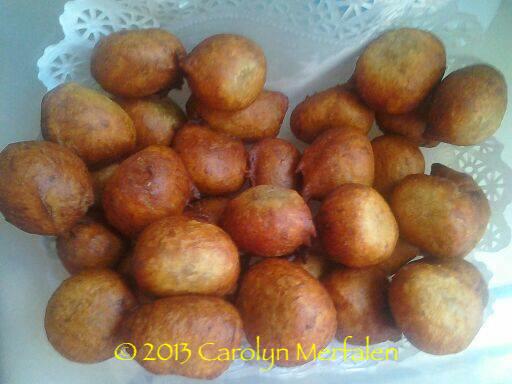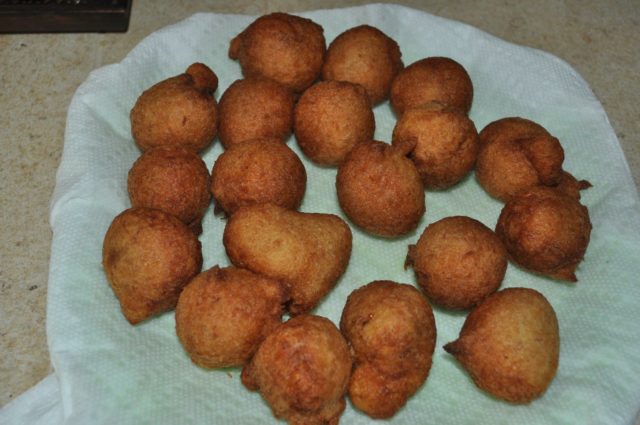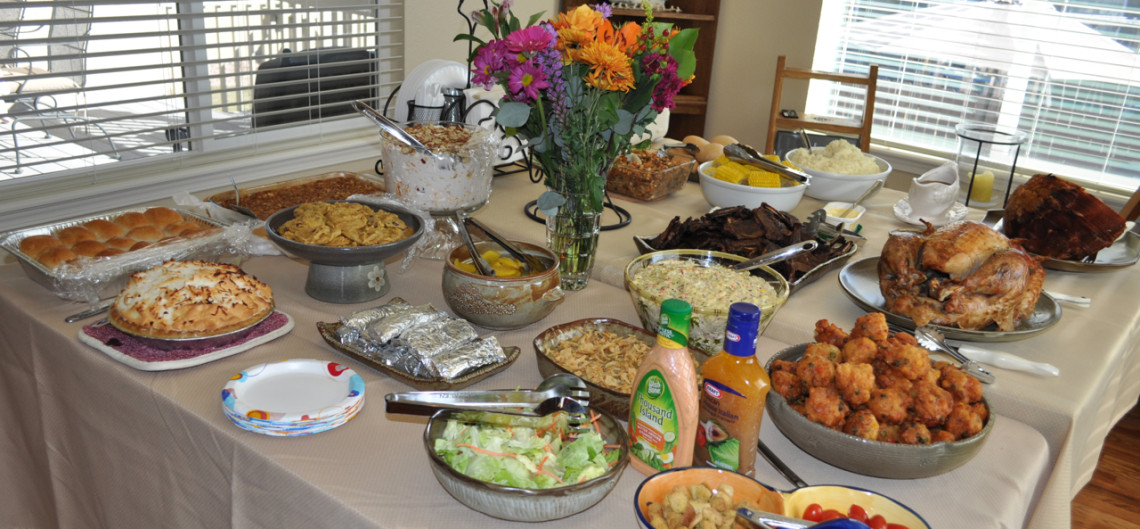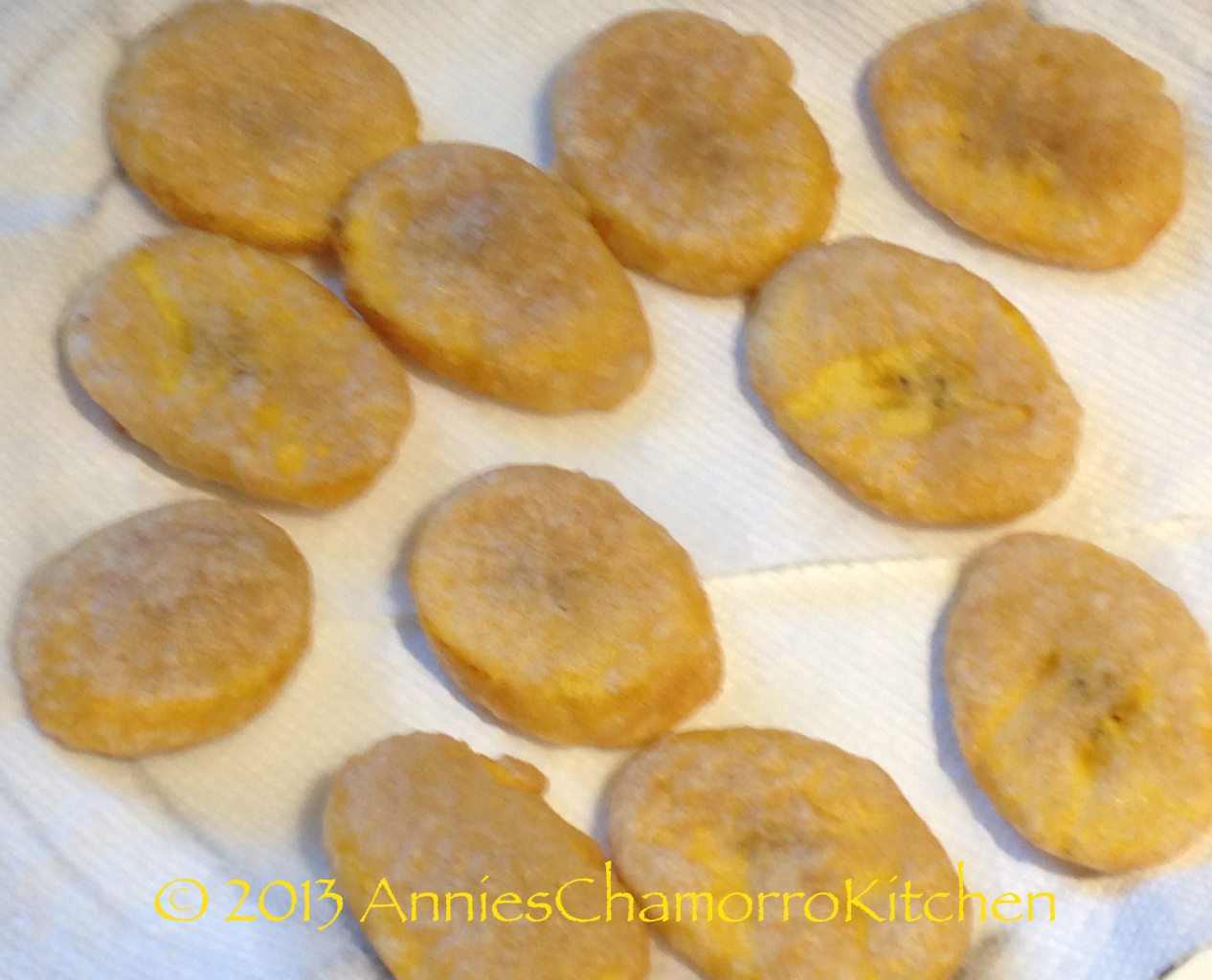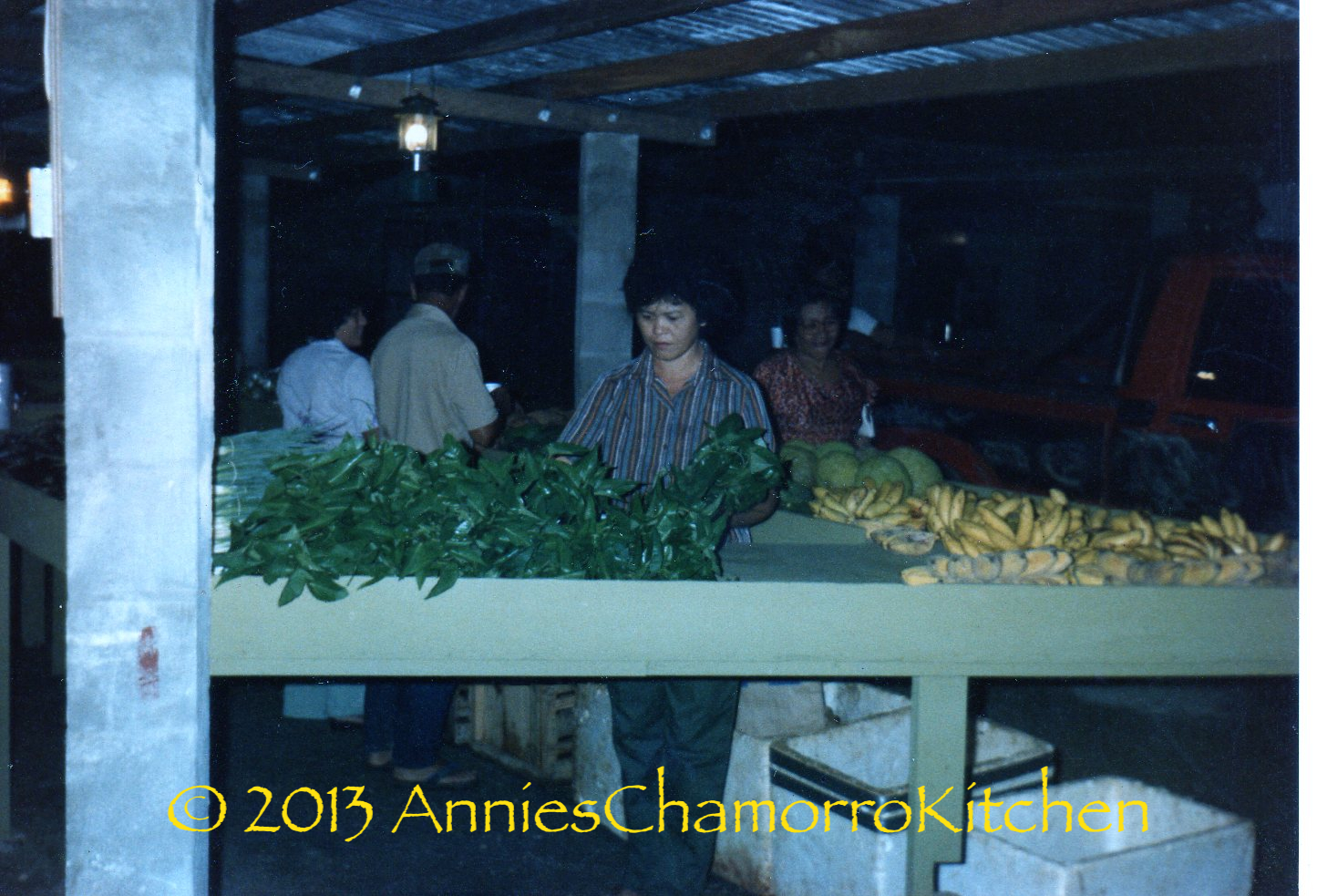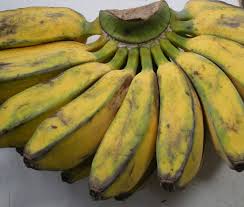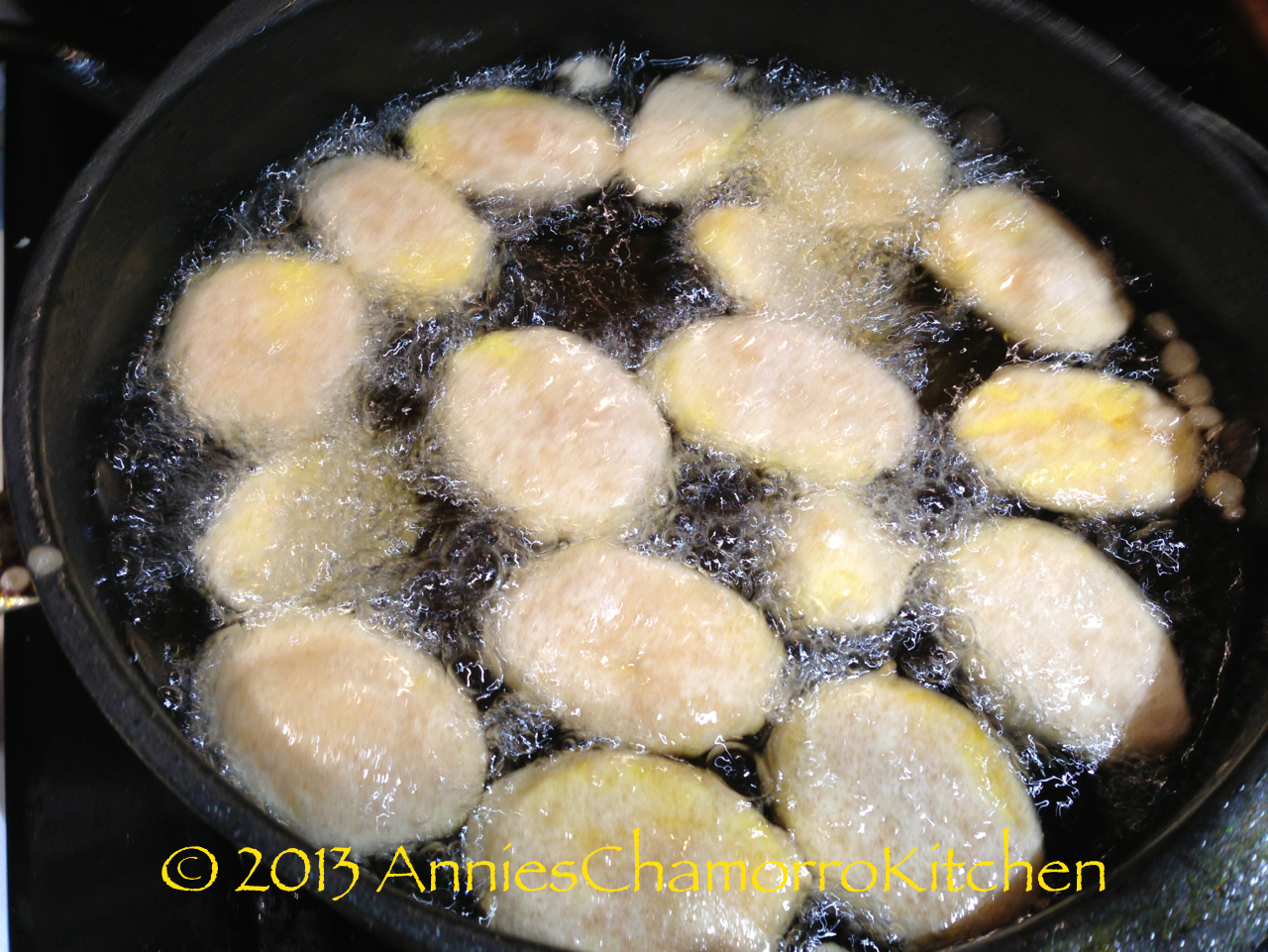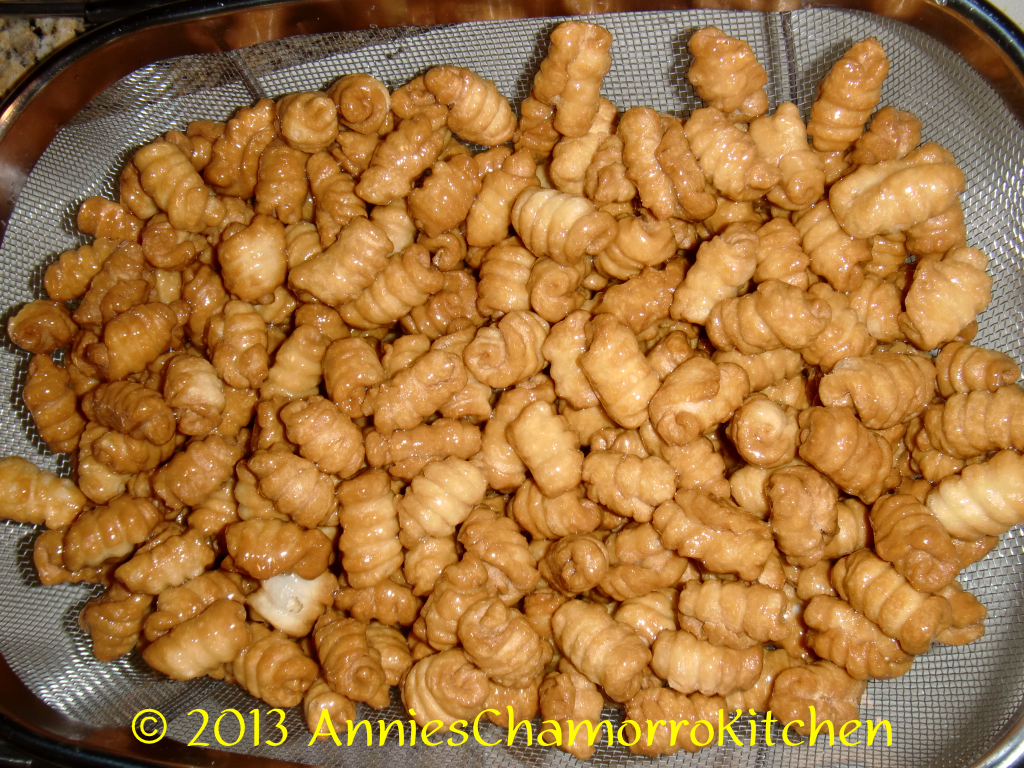Apigigi’ is a Chamorro dessert that takes quite a bit of time to make, if prepared the traditional way.
It calls for grated cassava or tapioca, coconut milk, young coconut meat or månha, and sugar. Mix it all together, grill (or steam for sweet tamåles), and a few hours later you have a delicious dessert that is savored all the more for all the effort it took to make it.

I still remember when I was little; we’d make this mixture the old fashioned way. First, my mom would dig up some tapioca roots, peel them, then we’d grind them in that old fashioned grinder that you had to clamp to a table and rotate a hand-crank.
Then came the task of making coconut milk. First you husk the coconut (shake it first to make sure there was liquid in it; that meant it was still good). Then you grate the coconut using a kåmyu. Lastly, add a little bit of water and squeeze the heck out of the meat to get thick, delicious coconut milk.
Then there was the task of getting månha. As much as I did not care for grinding the cassava, I really didn’t like this part of the job (I only liked drinking the månha juice), only because in order to get a couple of cups of sweet månha, we had to cut open about a dozen månha then carefully scrape out the meat, being careful not to scrape out the husk with it. Of course, I always got a lot of the husk with the meat–I think this is why I hated this task most of all. I had to go back and pull off all the husk off the meat before we could use it.
But thankfully modern conveniences make this process a WHOLE LOT easier! You can buy canned coconut milk, grated cassava, and even young coconut meat, all packaged nicely, ready for you to make some apigigi’ or sweet tamales. Yay! 🙂
Grilled for apigigi’ or steamed for sweet tamales, this recipe is another family favorite. Make sure you read all the way to the bottom of this post for my twist to this Chamorro favorite.
Apigigi’ or Sweet Tamales
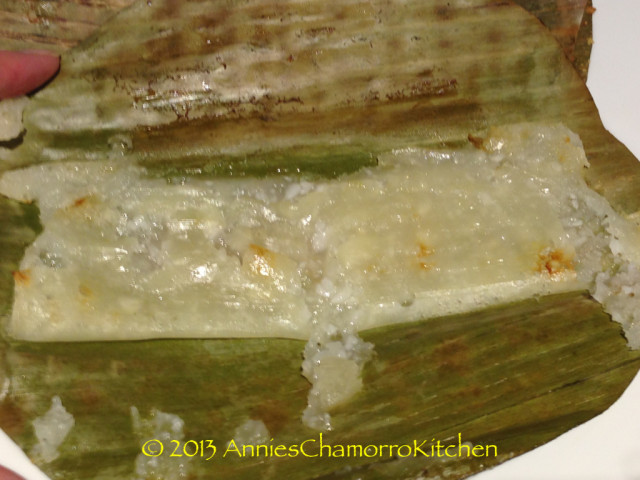
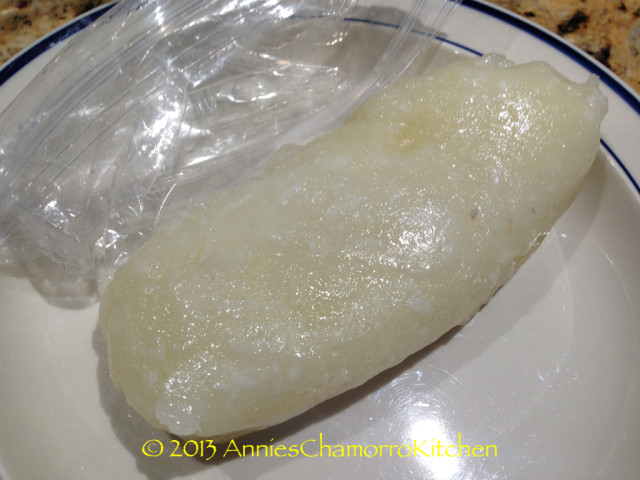
Ingredients:
- 1 bag (1 pound) grated cassava
- 2 cups månha (if you buy frozen månha, make sure it’s thawed and drained)
- 3/4 cup sugar (use 1/2 cup if you like it less sweet)
- 1/2 can coconut milk
- Banana leaves (for making apigigi, cut into 6×4-inch pieces)
Directions:
1. Chop the manha, then mix it with the cassava, sugar and coconut milk.
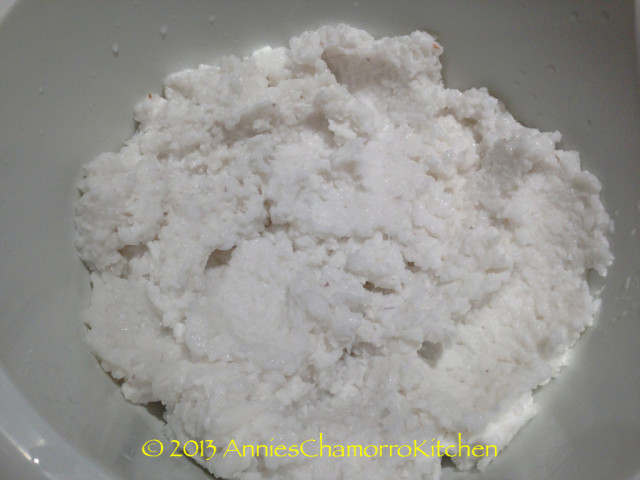
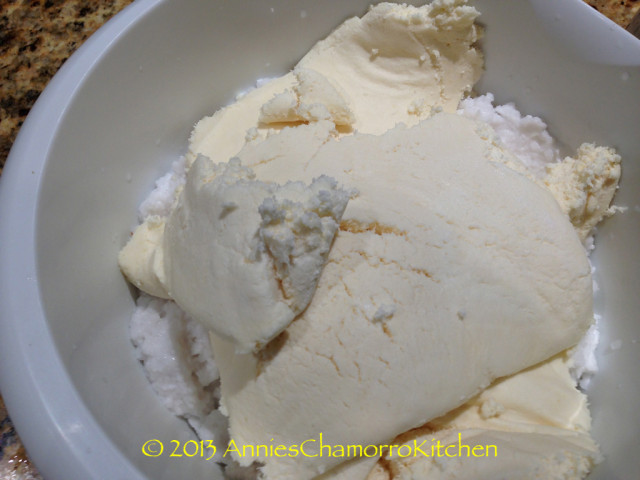
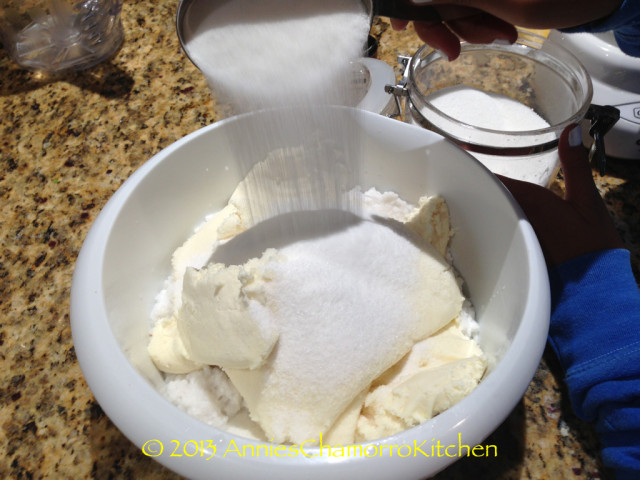
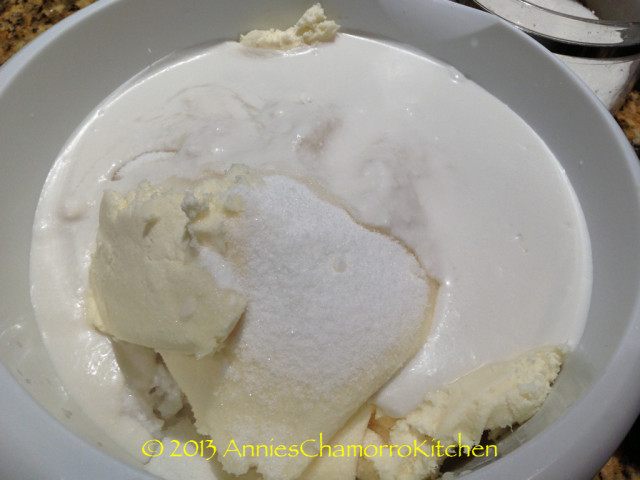
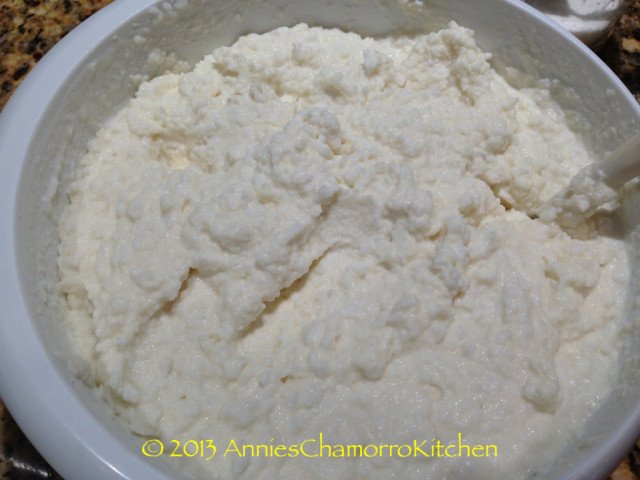
2. Spread a thin layer down the center (lengthwise) of the banana leaf. Fold each side in, over the batter.
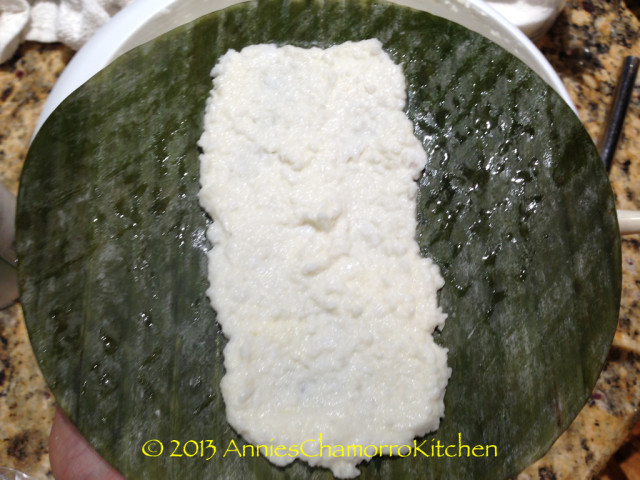
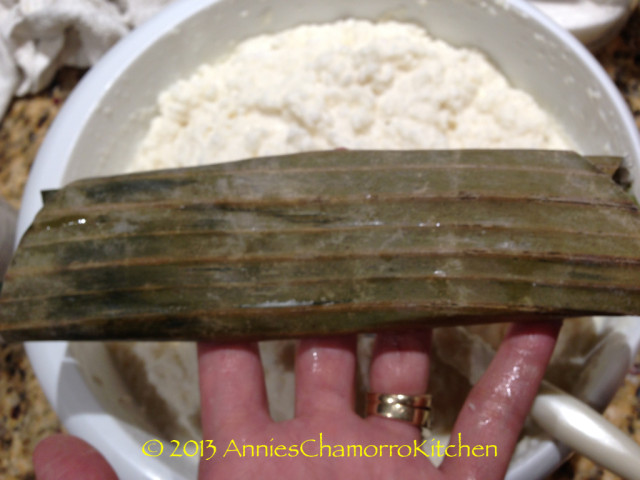
3. Grill over hot coals or on a stove-top grill pan, about 10 minutes on each side. Let cool then serve.


4. If making sweet tamales instead of apigigi’, fill snack-sized ziplock bags with about 4 tablespoons of batter. Wrap the bag with foil then steam the foil packets for 20 minutes. Allow to cool then serve warm. You can also chill the tamales and serve cold.
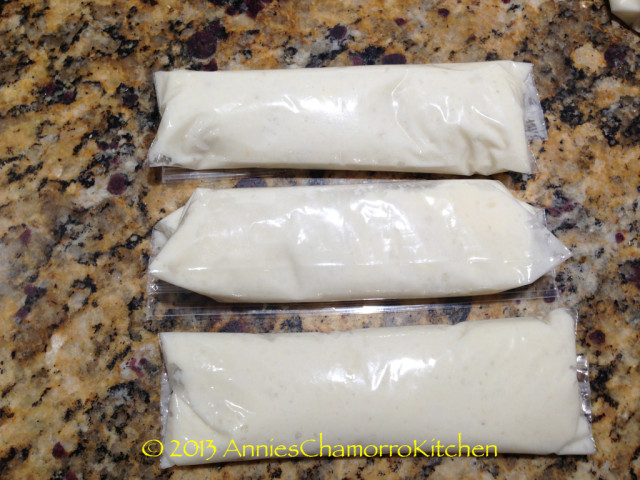
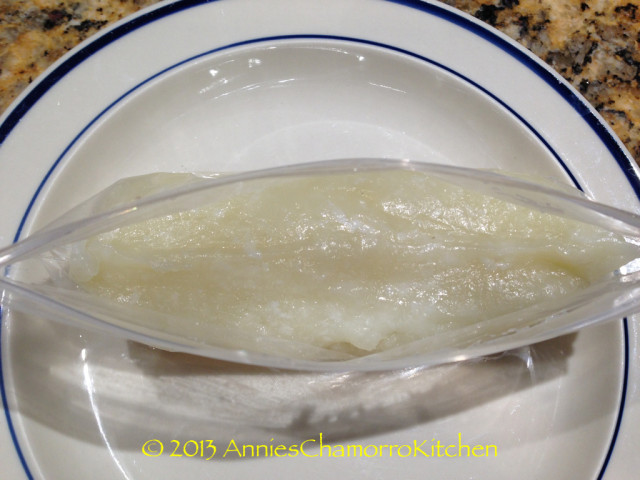

*NOTE: I also like to serve the steamed tamales unwrapped, placed in a shallow baking dish, then topped with a thick, sweet coconut topping. Here is my version of the topping:
Sweet Coconut Topping for Tamales
Ingredients:
- 1 1/2 cans coconut milk
- 2 tablespoons cornstarch
- 1 cup sugar
Directions:
1. Dissolve the cornstarch and sugar in the coconut milk. Pour into a small sauce pan then bring to a boil, stirring constantly until the sauce has thickened.
2. Pour the sauce over the steamed tamales. Serve while still warm.
Enjoy!
